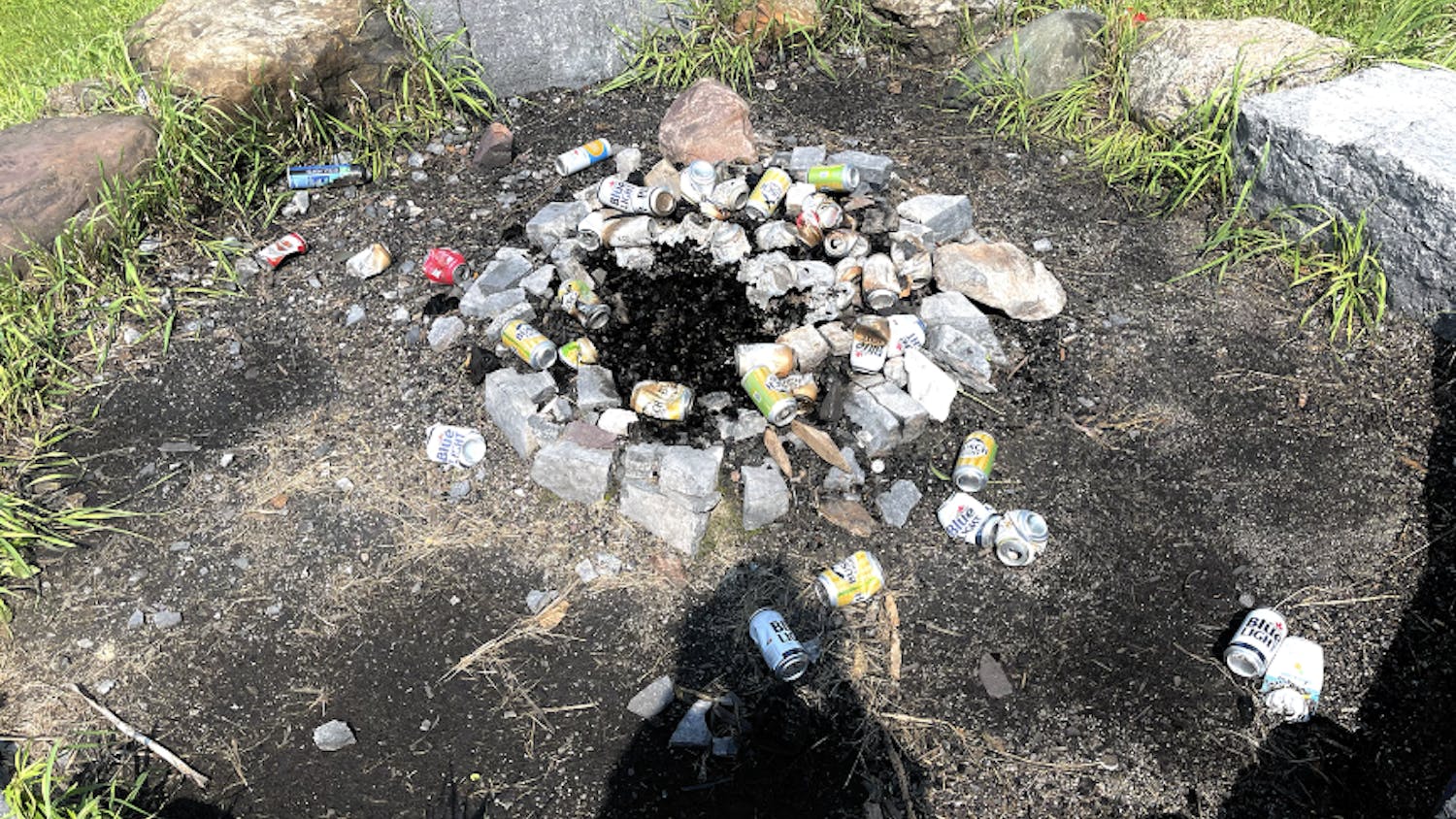Author: Kate Lupo
Environmental art has become ever more popular in a world that wishes to acknowledge and solve the problems of climate change. What is "environmental art" anyway and what sets it apart from other contemporary art? According to GreenMuseum.org, an online collaboration of environmental artists, environmental art helps improve humanity's relationship with the natural world and is oftentimes "ephemeral (made to disappear or transform), designed for a particular place (and can't be moved) or involves collaborations between artists and others, such as scientists, educators or community groups."
Middlebury's Committee for Art in Public Places (CAPP) brought two environmental artists to our campus last year: Deborah Fisher and Patrick Dougherty. Deborah Fisher created the cement and tire sculpture Solid State Change outside of Hillcrest and Patrick Dougherty set up shop in front of the CFA and made So Inclined, a grouping of his signature monumental "hive" sculptures made with local saplings.
While these sculptures were at least partially created to serve as reminders of Middlebury's commitment to the environment, they are not without controversy. Deborah Fisher's sculpture in particular sparked a storm of heated conversation and debate on the Middlebury campus, with many students wondering why Middlebury had paid money for such an "ugly" sculpture that looked like "trash." Patrick Dougherty's sculptures also had people asking why this "environmentally friendly" artist needed to kill hundreds of young tree saplings in order to create his art. These conversations had people thinking about what "environmental art" really means. Should environmental art be beautiful? Should it be environmentally efficient? How do we measure the success of an environmental artwork at all?
Deborah Fisher's Solid State Change certainly succeeded in creating debate and conversation on campus, but it did not succeed in translating its environmental message to the Middlebury community. I believe that Solid State Change would have been more likable and communicative if it had been installed indoors, which would have put the focus on the sculpture's impressive size and allowed people to more closely observe and appreciate the intricate work that went into each tire fold. Solid State Change could have also included a more informative and easily read label (not one hidden in the grass) if it had been placed indoors. A label would have helped viewers to better understand the environmental message of the artwork and how the cement base of Solid State Change was created to represent the geography of Middlebury and create a "symbiosis" with the recycled tires on top. As it is now installed outdoors, the sculpture is either ignored or scoffed at. Thus, we can see how the placement and presentation of environmental art is important in the interpretation of its message.
Patrick Dougherty's So Inclined sculptures are more aesthetically pleasing than Solid State Change and the process of weaving the sculptures created a closer relationship between the artist, volunteers and the natural environment, but wasn't the destruction of hundreds of saplings a contradiction of Dougherty's environmental message?
These public sculptures at Middlebury have shown how environmental art is not always easy to define and understand, which means that the public must begin to look at this new type of art in a new way. Perhaps we should not simply judge the success of an environmental artwork by its aesthetic beauty, but by how well the artwork furthers an environmental message in its materials, location, installation, etc.
It is important that people at Middlebury questioned both Patrick Dougherty and Deborah Fisher's works as contradictions of their environmental themes. As I mentioned before, people lamented Dougherty's use of harvested saplings in his 'environmental art,' while others were troubled by the fact that the transportation of Fisher's huge sculpture from New York to Vermont probably wasted gasoline and produced pollution. As environmental art begins to change the face of the Art World, we should all continue to voice our opinions to help rethink and redefine what "environmental art" should be in the 21st century.
Lupo Fiasco Green art's identity crisis
Comments



